

Just because it’s cold and snowy doesn’t mean you can’t enjoy the outdoors. With a little planning and preparation, outdoor hikes during the winter can allow for amazing views, wildlife-watching opportunities, and fewer crowds—letting you walk for miles enjoying everything nature has to offer this time of year.
To get started, here’s a list of our top 10 favorite scenic winter hikes around the U.S., from mountains to meadows, waterfalls, and plateaus, to lush forests and even a volcano. Grab your hiking boots and winter gear and head out to the trails!
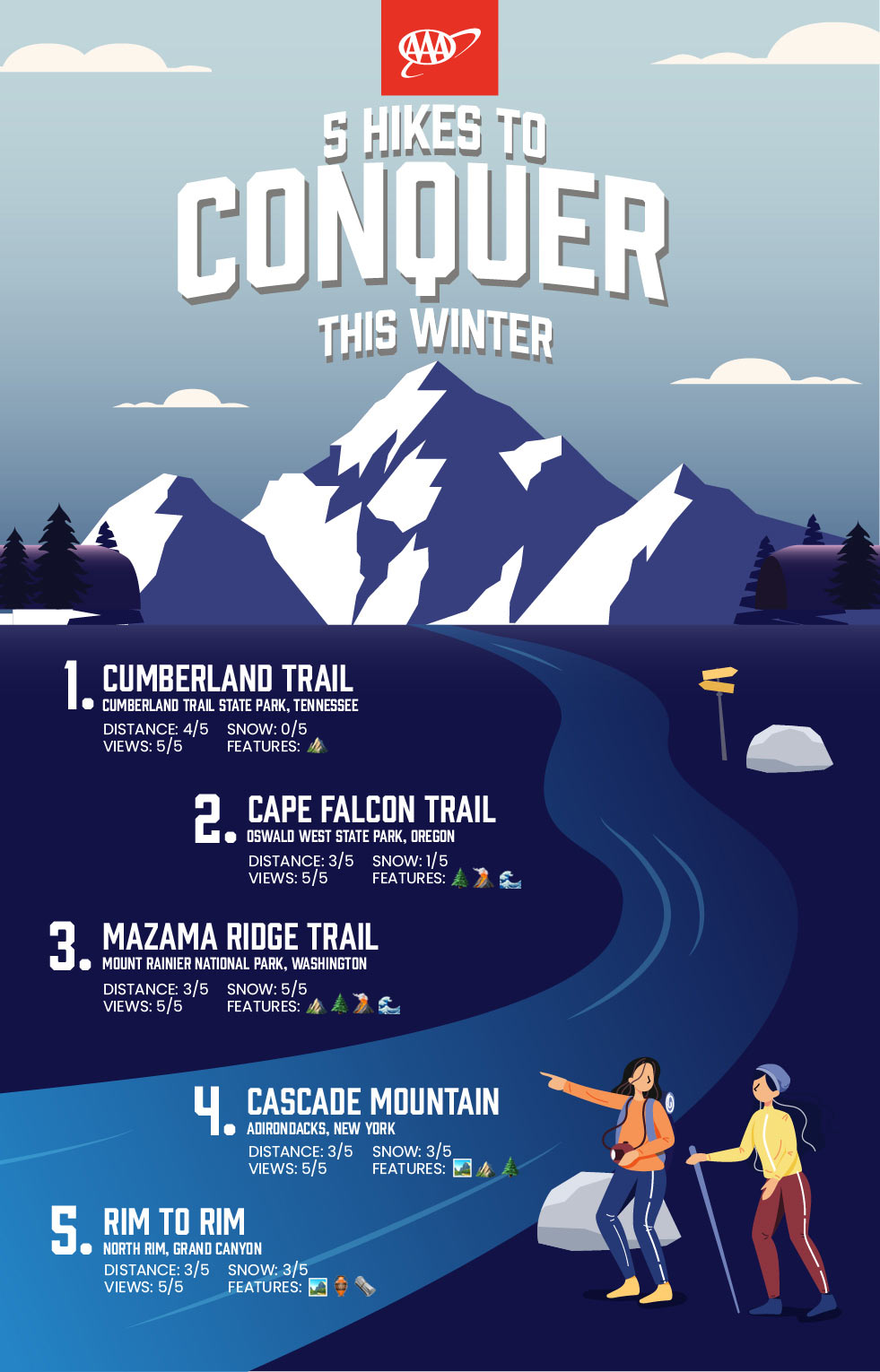
CUMBERLAND TRAIL, CUMBERLAND TRAIL STATE PARK, TENNESSEE
Once completed, this trail will stretch 282 miles from Cumberland Gap on the Tennessee, Virginia, and Kentucky border to the Tennessee River Gorge on the Tennessee, Alabama, and Georgia border. Following a line of pristine high ridges and deep gorges along the Cumberland Plateau, you’ll wander through the remains of the Cumberland Mountains, scenic vistas, bluff-side views, overlooks, and geological formations.

Oswald West State Park zfphoto/iStock.com
CAPE FALCON TRAIL, OSWALD WEST STATE PARK, OREGON
This trail may be shorter than five miles, but it takes you through a forest of Sitka spruce trees to a lava headland, where the lava rock sticks out over the sea with views of the Neahkahnie Mountain. Cross over Kerwin Creek and make your way to a cliff overlooking the sea, where you can make a short detour to Blumenthal Falls. Weave in and out of meadows, through forests, and along the coast for breathtaking views with a dusting of snow.
If you’re looking for a longer adventure, check out the 13-mile Oregon Coast Trail that weaves through the park.
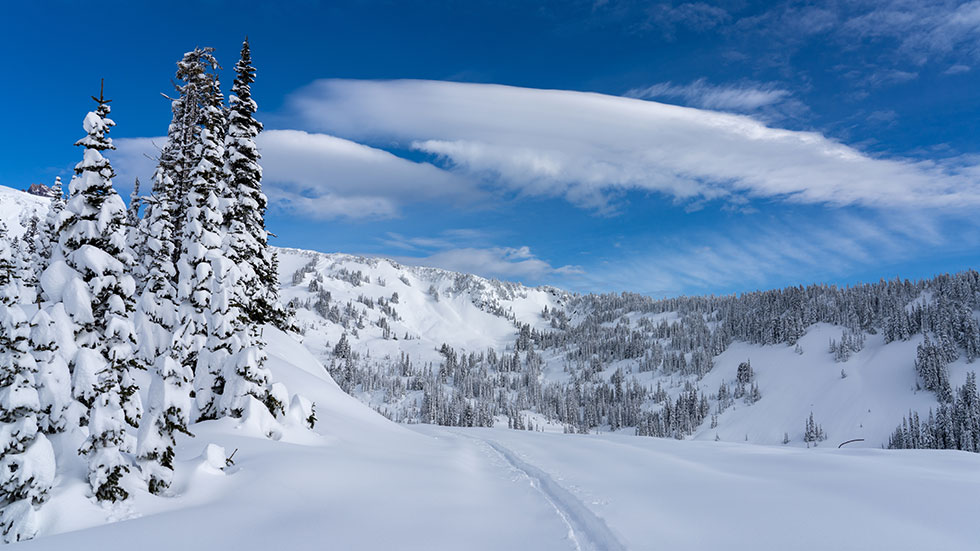
Mazama Ridge. Photo by John Callery/iStock.com
MAZAMA RIDGE TRAIL, MOUNT RAINIER NATIONAL PARK, WASHINGTON
Mount Rainier, an active volcano, tops out at nearly 14,500 feet above sea level. While hikers and roadtrippers flock to this destination year-round, it’s extra special to visit the peak when it’s covered in show.
The six-mile Mazama Ridge Trail requires a pair of snowshoes, but takes you through the alpine meadows with views of Mount Rainier, the Tatoosh Range, Pinnacle Peak, The Castle, rolling meadows and more—all perfect photo opportunities. You can also see Reflection and Louise Lakes at an overlook midway through the hike.
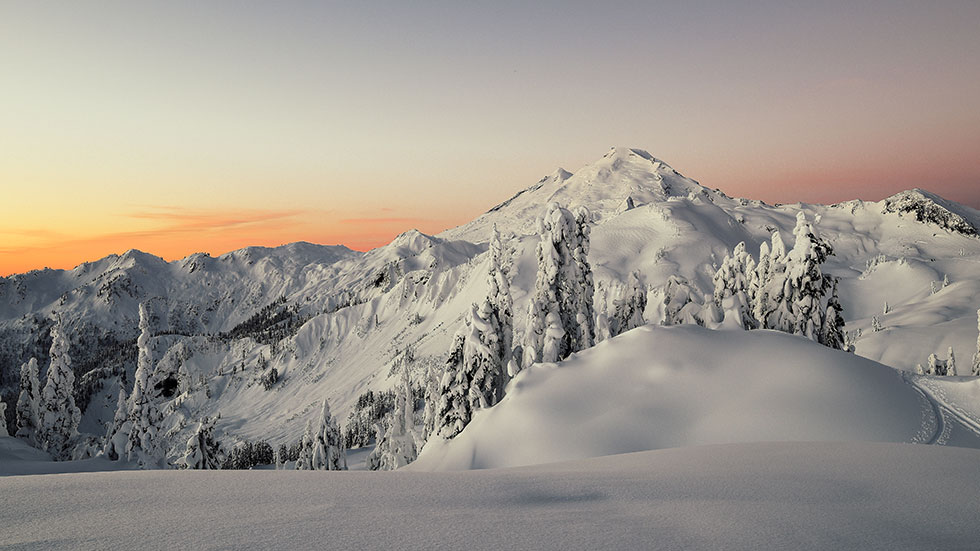
Mount Baker North Cascades. Photo by july7th/iStock.com
BAKER LAKE TRAIL, NORTH CASCADES, WASHINGTON
This easy-to-moderate trail takes you through a forest along the shoreline of Baker Lake in the North Cascades. Because it’s a lower elevation, the trail typically stays snow-free, but the climate keeps the trees lush and green. Stellar views of Mount Baker, Baker Lake, and old forests full of foliage, fungus, and moss, will impress even the most experienced hikers.
While the full trail is 14 miles, smaller hiking options such as the trek to Maple Grove still provide breathtaking views of the lake and mountains.
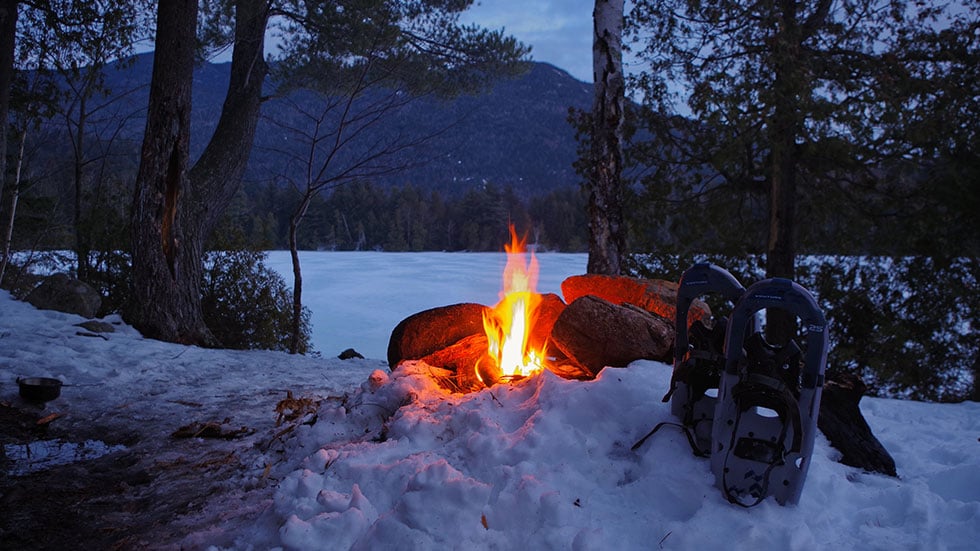
Adirondack Mountains of Upstate New York. Photo by James Mahan/iStock.com
CASCADE MOUNTAIN, ADIRONDACKS, NEW YORK
If you’re looking for scenic, panoramic views of the mountains, this 4.8-mile trail on Cascade Mountain is a popular winter hiking destination. This hike is considered one of the easier ones of the 46 High Peaks, but that doesn’t mean it’s not a challenge. Elevations of nearly 2,000 feet, snow, and ice can make the hike dangerous if you’re not prepared.
Follow the trail up a set of stairs and across a bridge, then begin hiking up the trail passing waterfalls, rock formations, and forests. This is an excellent snowshoe excursion, though microspikes are also recommended. Be sure to bring extra layers because once you’re at the top, it’s windy and can be freezing.
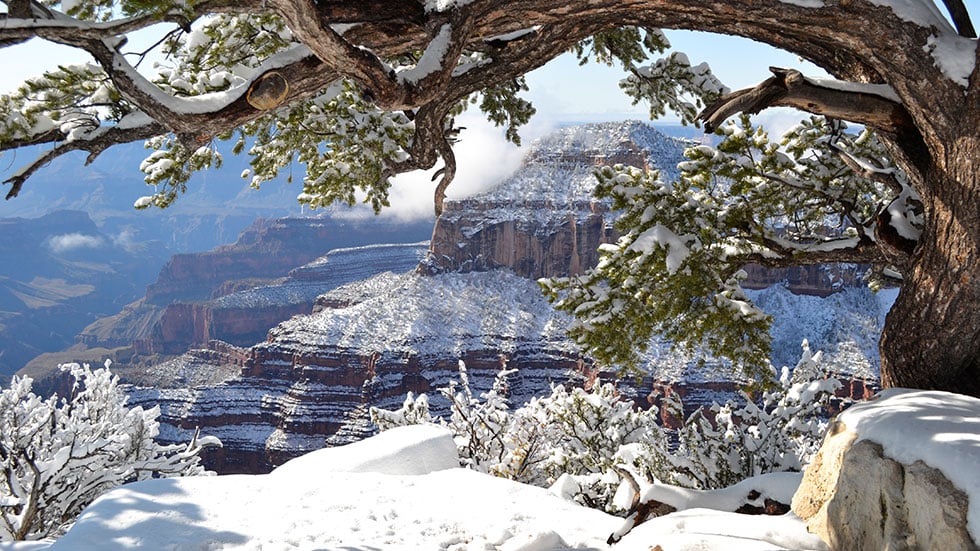
North Rim of the Grand Canyon. Photo by Felicia Canfield/iStock.com
RIM TO RIM, NORTH RIM, GRAND CANYON
This trek may take extra planning and is 44 miles round trip, but is definitely something to add to the winter hike bucket list. While both rims of the Grand Canyon are likely to be covered in snow, the rest of the trek has ideal hiking conditions during the winter. You’ll make your way through cottonwood trees, pass the Colorado River, view waterfalls and native ruins, and see layers of ancient rocks and formations.
People of all ages can complete this hike, but proper training and preparation is recommended. It can be demanding and being in strong hiking shape can make the trek easier. If you’re not ready to go this hike alone, there are trips you can plan with groups or a guide.

Kolob Canyons Zion National Park. Photo by GeorgePeters/iStock.com
TIMBER CREEK OVERLOOK TRAIL, ZION NATIONAL PARK, UTAH
This short trail (just over one mile) takes you along a small ridge with spectacular views of the Kolob Canyons, the Kolob Terrace, and the Pine Valley Mountains. You may even see Mount Trumbull, over 100 miles away in the Grand Canyon. These cliffs, overlooking the Zion Park wilderness, provide plenty of places to take memorable photos.
If you’re interested, there are other hiking opportunities in Kolob such as the 5-mile Taylor Creek hike and 14-mile La Verkin Creek Trail. These trails provide stunning views and may be a little more challenging in the winter for those who are up for it.

Rose River Falls. Photo by Aimintang/iStock.com
ROSE RIVER FALLS, SHENANDOAH NATIONAL PARK, VIRGINIA
This 4-mile hike takes you alongside the river and ends at a picturesque, 67-foot waterfall that continues to run in the winter. Listen to the cascading water as you follow the stream through the park on this moderate hike. If you’re eager for more, Shenandoah National Park is home to hundreds of miles of back-country hiking opportunities bursting with wetlands, waterfalls, rocky peaks, spectacular views, and an abundance of wildlife.
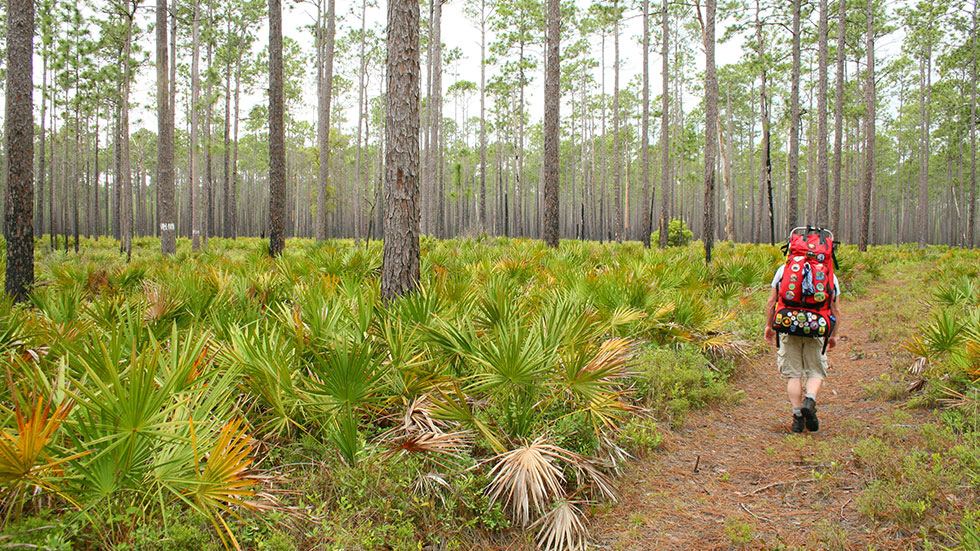
Florida national trail. Photo by luckyboot/iStock.com
FLORIDA NATIONAL SCENIC TRAIL, FLORIDA
If you’re looking to escape the snow and winter weather but still looking for an enjoyable hike, this 1,500-mile, long-distance trek will take you through cypress forests, swamps, and shorelines from Big Cypress National Preserve to the Gulf Islands National Seashore. Whether you take on the entire hike, or try smaller sections of the trail during day trips, this hike is sure to show you a variety of breathtaking landscapes and wildlife.
HOW TO PREPARE FOR A WINTER HIKE
Preparing for a winter hike and ensuring you have the right gear can help keep you safe.
- Wear waterproof hiking boots with good traction, or consider a pair of snowshoes or microspikes and walking poles to help keep your balance.
- Wear lightweight layers, but be sure to wear or pack a pair of gloves, hat, extra socks, and an emergency blanket.
- Bring snacks and extra water in your backpack, and stay hydrated throughout your hike. Pack snacks that are high in protein and carbs to give you energy.
- Don’t rely on your phone since tech devices may malfunction in cold temperatures. Bring extra batteries or battery packs, and try to keep your electronics warm and dry.
- Print out or grab a map of the trail and keep it with you in case trail markers are covered with snow.
Before you go, do research on the trail. Be aware of any trails that are closed or detoured, and plan your route accordingly. You should give yourself plenty of time to finish your hike before it gets dark. Also check the weather to make sure no snowstorms or other hazardous weather can affect your hike or the trails.
